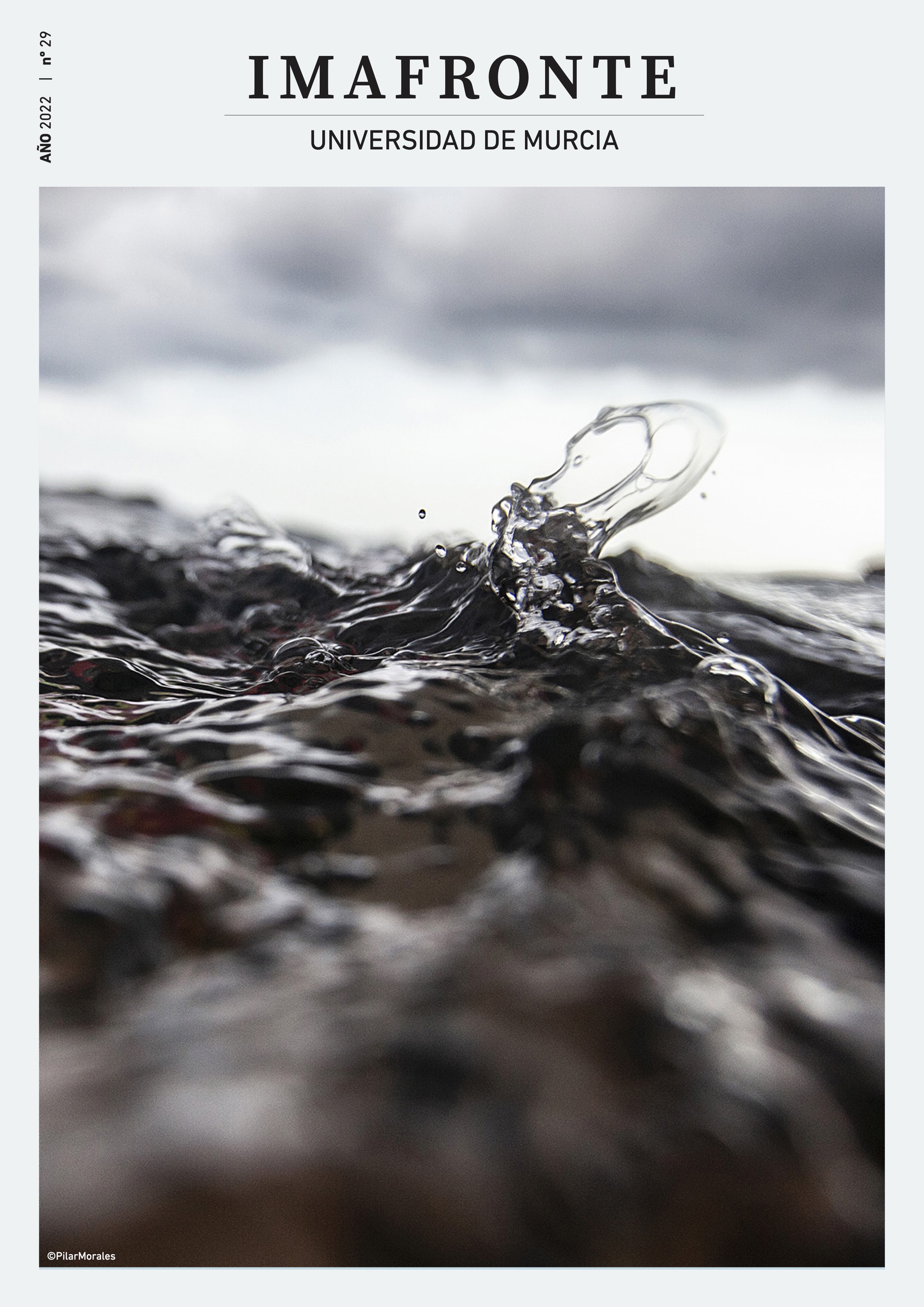Animación de objetos y de formas en los cineístas murcianos. Influencias de la animación internacional en el cine amateur
Resumen
El movimiento de cine amateur que surgió en Murcia en los años cincuenta constituye uno de los elementos más destacables en la cultura y el arte de dicha ciudad en la última centuria. Con una extensa y variada producción de cortometrajes, Murcia pasó a ser el segundo foco nacional, tras Barcelona, en lo referente a este tipo de creaciones. El objetivo de este estudio es poner en valor el notable papel que en dicha producción representaron los filmes de animación, en concreto los de animación de objetos y de formas abstractas, así como evidenciar la importante influencia que en ellos tuvieron los principales realizadores de este tipo de animación a nivel internacional.
Descargas
-
Resumen1343
-
PDF765
-
EPUB123
Citas
Artigas, J. (2002). Cine de animación experimental en España. Cervantes Virtual: http:// www.cervantesvirtual.com/obra-visor/cine-de-animacion-experimental-en-espana--0/ html/ff8fdde6-82b1-11df-acc7-002185ce6064_7.html
Bierton, T. (2004). Stop-Motion Puppet Sculpting: A Manual of Foam Injection, Build-Up and Finishing Techniques. USA: McFarland & Co Inc Pub.
Bonet, E. y Palacio, M. (1983) Práctica fílmica y vanguardia artística en España, 1925-1981. Madrid: Universidad Complutense.
Cánovas, J.T. y Cerón, J. F. (1990), Murcianos en el cine. Murcia: Cajamurcia Obra Cultural. Cerón, J. F. (ed.) (2003a): Encuadre. Tomo I. Estudios e índices. 50 Aniversario de Una aventura vulgar. Murcia: Universidad de Murcia-Aula de Cine.
Cerón, J. F. (ed.) (2003b): Encuadre. Tomo II. Edición Facsímil. Murcia: Universidad de Murcia-Aula de Cine.
Cerón Gómez, J. F. (2002). El cine amateur en Murcia durante la década de los años cincuenta. En Ruiz Rojo, J. A. (coordinador), En torno al cine aficionado. Guadalajara: Diputación Provincial de Guadalajara, CEFIHGU, 49-64.
Cerón Gómez, J. F. (1991). Los inicios del cine amateur en Murcia, Imafronte (6-7), 61-72. De la Rosa, E. (1996). El cortometraje de animación. En VV.AA. Historia del cortometraje español. Madrid: Festival de Cine de Alcalá de Henares, 387-465.
Díaz Maroto, C. (2010). Ray Harryhausen. El mago del stop-motion. Madrid: Calamar Ediciones.
Felíu, J. (1957a). ¿Por qué... Inquietud, 8, 14-15.
Felíu, J. (1957b). El cine amateur del concurso de 1957. Inquietud, 10, 1-4.
Gubern, R. (1999). Proyector de luna. La Generación del 27 y el cine. Barcelona: Anagrama.
Harryhausen, Ray. (2008). A Century of Model Animation. London: Aurum Press Ltd. McWilliams, D. (1991). Norman McLaren on the Creative Process. Montreal: NFB.
Palacio, M. (1997). Cine de vanguardia. En VV. AA. Historia general del cine. Vol. V. Europa y Asia (1918-1939). Madrid: Cátedra, 259-302.
Purves, B. (2011). Stop motion. Barcelona: Blume. Ramallo Asensio, G. (coord.). (2018). Homenaje a los cineastas amateurs murcianos y la Filmoteca Regional de Murcia. Murcia: Asociación Patrimonio Siglo XXI.
Richard, V. T. (1982). Norman McLaren, Manipulator of Movement: The National Film Board Years, 1947-67. London-Toronto: University of Delaware Press.
Romaguera i Ramió, J. (1996). Esbozo de una historia del cine amateur español. En VV.AA. Historia del cortometraje español. Madrid: Festival de Cine de Alcalá de Henares, 337-375.
Romaguera i Ramió, J. (1991). 30 años de experimentación en el cine amateur catalán. En VV.AA. Las vanguardias artísticas en la historia del cine español. Actas del III Congreso de la AEHC. San Sebastián: Filmoteca Vasca, 213-231.
Sanz, J. B. (1990). Antonio Medina Bardón. En Cánovas, J. T. y Cerón , J. F., 184-186. Shaw, S. (2008). Stop Motion: Craft Skills for Model Animation. London: Taylor and Francis Ltd.
Torrella, J. (1965). Crónica y análisis del cine amateur español. Madrid: Ediciones Rialp. VV.AA. (1996). Historia del cortometraje español. Madrid: Festival de Cine de Alcalá de Henares.
Derechos de autor 2022 Carlos Salas González

Esta obra está bajo una licencia internacional Creative Commons Atribución-CompartirIgual 4.0.
Las obras que se publican en esta revista están sujetas a los siguientes términos:
1. Los autores ceden de forma no exclusiva a la revista los derechos de explotación (reproducción, distribución, comunicación y transformación).
2. Las obras que se publican en esta revista están sujetas a la licencia Attribution-ShareAlike 4.0 International (CC By SA 4.0). Por lo que se pueden copiar, usar, difundir, transmitir y exponer públicamente, siempre que:
i) se cite la autoría y la fuente original de su publicación (revista, editorial y URL de la obra), permitiendo así su reconocimiento.
ii) se permite remezclar, transfromar o crear a partir del material mientras se mantenga la misma licencia del original.
3. Condiciones de auto-archivo. Se permite y se anima a los autores a difundir electrónicamente las versiones pre-print (versión antes de ser evaluada) y/o post-print (versión evaluada y aceptada para su publicación) de sus obras antes de su publicación, ya que favorece su circulación y difusión más temprana y con ello un posible aumento en su citación y alcance entre la comunidad académica. Color RoMEO: verde.
























